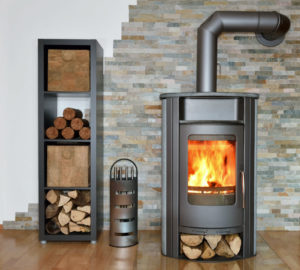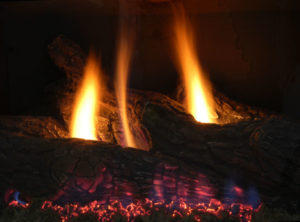Buying large quantities of firewood allows homeowners to get more wood at a better price without having to rebuy all season long. However, it comes with one major question: where are you going to store all that wood? Learning how to properly store your firewood can help you get the most out of your purchase and have great fires all winter.
Before you can store your firewood you have to find it! Picking the right kind of wood can have a major difference in the quality of your fires, so it is important to investigate your options. While the kind of firewood you use ultimately comes down to personal choice, most fireplace professionals recommend using seasoned hardwoods such as ash, maple, or oak. These woods produce less smoke, burn hotter and longer, and can maintain a constant heat better than other wood varietals.
Firewood storage tips
Firewood storage is often just as important as the type of firewood you buy. Even if you take the time to find and purchase the perfect wood, storing it in less than ideal conditions can lead to lackluster fires. The following tips can help you properly store your firewood this summer to have it ready to use when temperatures cool off again this winter.
- Split and stack logs: Before putting the wood away, make sure it is cut into the size logs you will use in your fireplace. Doing this maximizes the seasoning time of the wood and helps remove the greatest amount of moisture. Likewise, neatly stacking the wood maximizes airflow and minimizes the chance for rot.

- Place the pile away from the house: Although it may seem tempting to keep the firewood stack as close to the house as possible, doing so greatly increases the risk of accidental fire. Instead, store the wood in an area that is near – but not directly next to – the home to prevent it from igniting the house in case of fire.
- Store wood off the ground: While storing wood on a fireplace rack is preferred, wood can be stored on concrete or treated boards to stay off of the ground. Leaving firewood directly on the ground can allow moisture and insects into the wood, causing rotting throughout the pile.
- Cover the top, not the sides: The top of the wood stack should covered to directly protect it from moisture. However, leaving the sides of the wood stack open promotes airflow and helps dry out any moisture that gets into the pile.
- Keep wood outside: While small stacks of neatly chopped logs may seem like a charming interior design feature surrounding your fireplace, it can actually invite insects and other pests into your home. Instead, store firewood outside and only bring in as much wood as is immediately needed.
The way you store your firewood during the spring and summer can have a major impact on the quality of your fires in the fall and winter. For more information on the best firewood for your fireplace or for more tips on properly storing firewood, contact Pristine Sweeps today!

